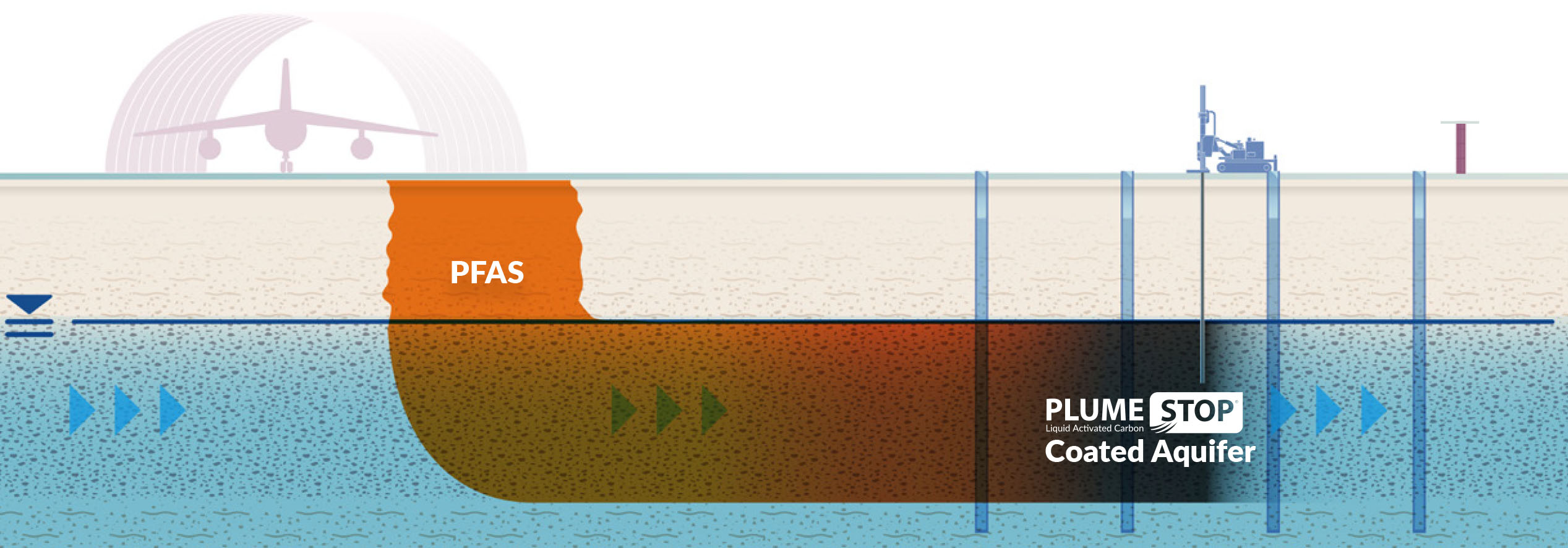Advanced PFAS Management Solutions to Protect Health
Advanced PFAS Management Solutions to Protect Health
Blog Article
Your Guide to PFAS Treatment Technologies and Benefits
The occurrence of PFAS contamination in water sources demands a thorough understanding of available treatment modern technologies. Each modern technology not just targets certain PFAS compounds yet also plays an essential duty in improving total water quality and protecting ecological integrity.
Recognizing PFAS Contamination
Comprehending PFAS contamination is vital for resolving its pervasive impact on environmental and human wellness (m270 pfas treatment). Per- and polyfluoroalkyl compounds (PFAS) are a team of synthetic chemicals extensively used in different industrial and customer products because of their water- and grease-resistant residential or commercial properties. Typically located in firefighting foams, non-stick pots and pans, and water-repellent fabrics, PFAS have gone into the environment via manufacturing procedures, wastewater discharges, and seeping from landfills
When launched, these compounds continue the setting, bring about prevalent contamination of dirt and water resources. Their distinct chemical framework, defined by strong carbon-fluorine bonds, renders them immune to degradation, leading to a phenomenon called "permanently chemicals." PFAS can gather in the human body and the food chain, possibly triggering unfavorable health and wellness results, consisting of immune system interruption, developing concerns, and a boosted threat of certain cancers cells.
Regulatory firms and health organizations are progressively identifying the significance of PFAS contamination, motivating efforts to check, evaluate, and alleviate its results. Recognizing the paths of PFAS contamination is crucial for notifying public law and developing efficient techniques to safeguard both environmental and human health and wellness.
Overview of Therapy Technologies
Various therapy technologies have been created to deal with the obstacles posed by PFAS contamination in water and dirt. These modern technologies can be generally identified into several classifications, each with its special mechanisms and performance in eliminating PFAS compounds.
One prominent strategy is ion exchange, which makes use of material products to record and get rid of PFAS from infected water. An additional technology, progressed oxidation procedures (AOPs), employs strong oxidants and ultraviolet light to damage down PFAS into much less harmful substances.

Triggered Carbon Filtration
Triggered carbon purification is an extensively used method for the removal of PFAS from infected water, understood for its ability to adsorb a wide variety of natural substances. This modern technology employs turned on carbon, a very permeable material with a substantial surface area, which facilitates the binding of PFAS particles with physical adsorption. The efficiency of turned on carbon in getting rid of PFAS is influenced by several aspects, consisting of the sort of carbon made use of, the contact time, and the concentration of PFAS in the water.
One of the benefits of triggered carbon filtration is its flexibility; it can be carried out in various configurations, such as granular turned on carbon (GAC) systems or powdered activated carbon (PAC) systems. GAC systems are generally employed in larger-scale applications, while PAC can be made use of in smaller sized or temporary configurations. The innovation is fairly easy to run and preserve, making it obtainable for several water treatment centers.

Ion Exchange Equipment
Ion exchange systems represent an additional effective approach for the elimination of PFAS from polluted water, enhancing techniques like turned on carbon filtration. These systems operate on the principle of trading ions in the water with ions held on a resin material. Ion exchange materials can be specifically formulated to target the negatively billed PFAS compounds, properly capturing them and enabling cleaner water to pass through.
Among the more helpful hints primary advantages of ion exchange systems is their ability to remove a vast array of PFAS, consisting of both long-chain and short-chain variants. This flexibility makes them ideal for numerous applications, ranging from municipal water treatment to commercial processes. Furthermore, ion exchange systems can usually achieve reduced discovery restrictions for PFAS my website compared to a few other treatment methods, therefore enhancing water high quality.
However, it is vital to monitor and manage the regeneration of ion exchange media, as the efficiency can decrease in time because of saturation. Proper upkeep and substitute of the resin are important for maintaining the system's effectiveness. In general, ion exchange systems give a trustworthy and efficient remedy for PFAS removal, adding substantially to risk-free drinking water requirements and environmental management.
Advanced Oxidation Processes
Advanced Oxidation Processes (AOPs) make use of powerful oxidants to effectively weaken PFAS substances in infected water. These ingenious therapy methods produce extremely responsive varieties, such as hydroxyl radicals, that can break down complicated PFAS molecules into less unsafe results. m270 pfas treatment. AOPs commonly utilize combinations of ultraviolet (UV) light, ozone, hydrogen peroxide, or Fenton's reagent, enhancing the oxidation possibility and enhancing destruction efficiency
The key advantage of AOPs depends on their capability to target a broad series of PFAS substances, consisting of both long-chain and short-chain variations. This convenience is essential, as PFAS contamination commonly involves mixtures of different substances with varying chemical frameworks. AOPs can be integrated right into existing water treatment systems, making them a practical solution for lots of districts and markets.
Nonetheless, the execution of AOPs can be resource-intensive, needing careful consideration of functional prices and energy usage. In addition, while AOPs are efficient in damaging down PFAS, they may not completely remove all results, necessitating additional therapy actions - m270 pfas treatment. Generally, AOPs stand for an appealing method for dealing with PFAS contamination, adding to cleaner water sources and improved public health protection

Verdict
By choosing the proper innovation, neighborhoods can boost water top quality, safeguard public health, and minimize the environmental threats connected with go to this site PFAS direct exposure. Continued study and application of these approaches are necessary for reliable management of PFAS contamination in influenced locations.
Report this page